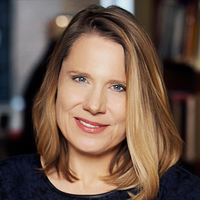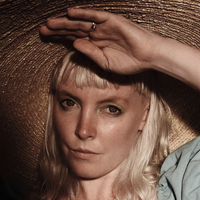On finding your purpose
Prelude
Nyla Hasan is a fashion designer and visual artist who launched the øther collection in 2021. The øther collection is a vehicle to explore identity and belonging through art, fashion, storytelling, and design. Her work focuses on exploring South Asian textile and embroidery-based crafts working with artisans from the South Asian Diaspora and uplifting the narrative and heritage of these crafts. The collection is focused on conscious creation through producing small batches to avoid excess waste and over-production. Hasan lives and works in Brooklyn, New York.
Conversation
On finding your purpose
Designer Nyla Hasan discusses the life changes that led to her starting her fashion brand (the øther) and the personal story and process behind creating each new piece.
As told to Loré Yessuff, 1754 words.
Tags: Fashion, Design, Identity, Process, Beginnings.
Can you talk about the impetus for your brand, the øther?
What led me down my path. In a really brief synopsis of my life, I’ve worked in the fashion industry for about 15 years. I’ve worked for other designers, big names, mostly white founding brands which, obviously, I gained so much experience through those different instances that I’ve been immersed in through my career. I had a child in 2017 and it was kind of the catalyst of all the things that have accumulated in my life, specifically to my identity, that kind of came to a full head.
I’m mixed race. My mom is white, my father’s Pakistani. He’s an immigrant, he’s an American citizen now, but he came here in the late ’70s and I spent half my childhood in Pakistan and half in America. I was in these two polarizing spaces growing up and trying to grapple with my identity. I always saw myself as a fraction. I have these fractions of my identity and this is who I am and it felt much more like a fragmented sense of self versus a whole.
After the birth of my first child, it was kind of this like, “Okay, what am I doing with my life? Am I happy with what I’m doing right now?” I realized that there were a lot of things I wanted to change to have creative freedom. I ended up leaving my job, because I needed a bit of a reset and space to find out what my path was.
Then the following Monday after I left my job, I had a stack of post-its on my coffee table. I started writing down all the things that I cared about. I lined them up in rows. Everything from my relationship to my family, to my interests and hobbies and my identity and all these aspects that encompassed my life. I started asking myself: “What is my purpose? What am I looking to do going forward?”
All these questions led me down this path of coming up with this idea of the øther. Fashion has this narrow representation of beauty, not just the imagery. Yes, they might be represented by a diverse cast of models and that’s important, but who tells those stories is also important.
For me, fashion is my medium and vehicle for storytelling. It’s not just the product, it’s much deeper than that. It’s exploring this idea of belonging, identity, and what connects us or doesn’t connect us. It’s more than just a brand to me.
There’s actually layers within myself, as well as other individuals who might not be mixed race, but they have history. They have their ancestral history, intergenerational trauma and all these different things that influence them and their perspective. I feel like society tends to flatten identities, just putting them in this neat checkbox of who that person or that group is, but it’s so nuanced and so complex.
In 2019, I started exploring how to translate those ideas to a fashion context. I started sketching and that was the hardest part. How do I manifest this really big idea? I can’t represent everything I want to say in garments and through imagery. So I try to do it in other ways as well.
What is your personal history with fashion design and why did you decide to explore this idea through that medium?
I guess it’s kind of the typical story of, when I was 13, I knew I wanted to go into fashion. I was always into art. I was a painter. I loved sketching. Then I was introduced to Harper’s Bazaar. I was really into Galliano’s Christian Dior and all the styles from the late ’90s that were big. Oscar De La Renta was one of my all time faves who I ended up apprenticing for in college before he passed.
I was raised Muslim and grew up in a very conservative environment. I had trouble finding clothes that I liked and my parents were cool with, so I just started sewing my own. I would buy patterns from Joann’s, alter them, make them into my own kind of designs. Eventually, I had a little prom dress business. At 15, I was like, well I want to be a designer and explored making more clothing and all of that and attended FIT when I graduated. I was really experimental in school. I did really crazy shit, but it was a good outlet to play with ideas.
I always had it in me that I wanted to do my own thing. I wasn’t ready for a long time, but I think the catalyst was my life changes. I want to be able to tell my own story that doesn’t feel represented in any sort of way in fashion.
As you’re talking about your story, I can see a very clear connection between your current practice and the creative urge you felt as a young girl. It’s really interesting how that followed you throughout your life. Do you feel connected to your childhood self in that regard?
Yeah. I think there’s always this inner passion and drive that has stayed within me. Once I aligned on the things that feel important now, it felt very reflective of what I always was searching for.
What has been the most surprising aspect of working on this project?
In terms of the operational tactile, the making of’s, how long things take. You have a timeline, it never happens. You just have to be flexible. I really wanted to be on a certain schedule initially and I changed, things evolved, then the COVID hit, I got pregnant, then I had my second child and I persevered through working on my business. I think the surprising thing is how long it took to get to this point. There was this level of flexibility and openness that I had to force myself to be okay with, like things not going the way that I wanted them to go, but they ultimately came together.
So come up with a concept. You get your materials. What is the process from idea to what someone might see on a website to buy?
There’s the traditional way of doing it, the way I’ve done it in different corporate settings, but I’ve realized that my process is different. There is coming up with a concept and inspiration, but I am much more emotionally driven. Instead of a collection, I call them moods.
The first mood is called Within the Looking Glass and it’s kind of like this autobiographical nod, reflecting on how others perceive and project identity. There’s this psychology theory called the looking glass and it’s basically how one’s own perception is informed by other people’s perception of themselves, of that person and how that influences them, thinking about that in regards to my own identity and people’s assumptions of me and grappling with what that means to me.
I explored different techniques that are based in the South Asian diaspora. I traveled to Pakistan last March in 2020. That was crazy and impulsive, I was pregnant. I went back to reconnect with my heritage, the land, the place I grew up. I really give a lot of credit to my upbringing over there. It gave me a very deep sense of connection to my Pakistani and South Asian heritage.
When I went there, I worked with a textile designer. We developed all sorts of different tie dye techniques. We went to the market, we bought a bunch of fabric. We made all sorts of tie dye swatches and played with glass blocks and wrapped chickpeas in fabric. We were just free to create. I don’t always have the luxury of doing that when I’ve worked for other brands. It’s always time crunch, get stuff done, be efficient, turn it out, send your sketches, etc. I came back with all these gorgeous swatches and I started designing with them in mind. It felt important to me to elevate the perception of South Asian craft, because typically products coming out of India, Pakistan, or Bangladesh, either their fast fashion or they have this Bohemian ethnic look, but it’s so much more beyond that.
I’m driven by this pride I have in my culture. I want to show what we can do with all these amazing traditional techniques. I developed embroidery swatches with artisans over there. They literally can do anything under the sun. It’s the most creative space working there. I really enjoy working with that type of freedom. I’m like, well I have this idea and they’re like, okay we’ll make it happen. So they’ll try some things and send some photos, send me swatches and I’ll have some ideas and we’ll go back and forth. It’s this collaboration between the workers there and the artisans and factory and myself. I’ll draft patterns and I’ll drape dresses. The process ended up being much more fluid where I was able to just gradually add pieces to it.
From March through December, I was trying to launch right after my second child in late 2020. But then I was like, wait, things are still happening. I’m going to put this off. I kept pushing my timeline, but then I kept adding things because I was like, well there’s this thing and that thing. I realized that my process is really driven by the fabrics, textures, and colors [I’m working with].
From there I start building what are the bodies and what bodies work and what fabrics. I’ll get prototypes from them. I’ll send [the artisans] the details, the tech pack. A tech pack is all the measurements of every point of the garment. It has all the details of what trim I want, what buttons, thread, color, thread size, everything in detailed sketches, references, if there are any. I’ll fit them on a fit model here. I’m like Edward Scissorhands on these samples and I cut them and sometimes they’ll evolve from there. I actually work really well with garments. When I get something in my hands I’m able to then transform it even more or push it further.</spa>
Nyla Hasan Recommends:
- Name
- Nyla Hasan
- Vocation
- fashion designer and visual artist
Some Things
Pagination



